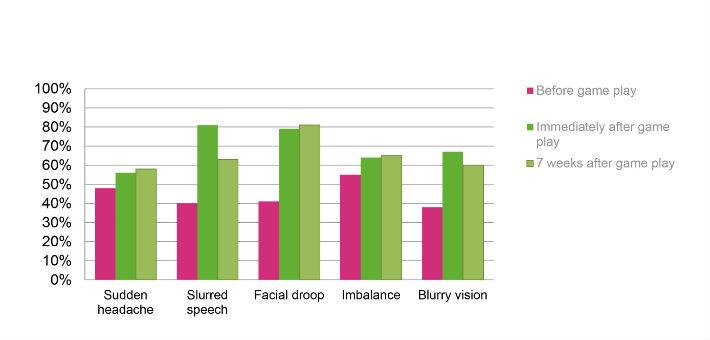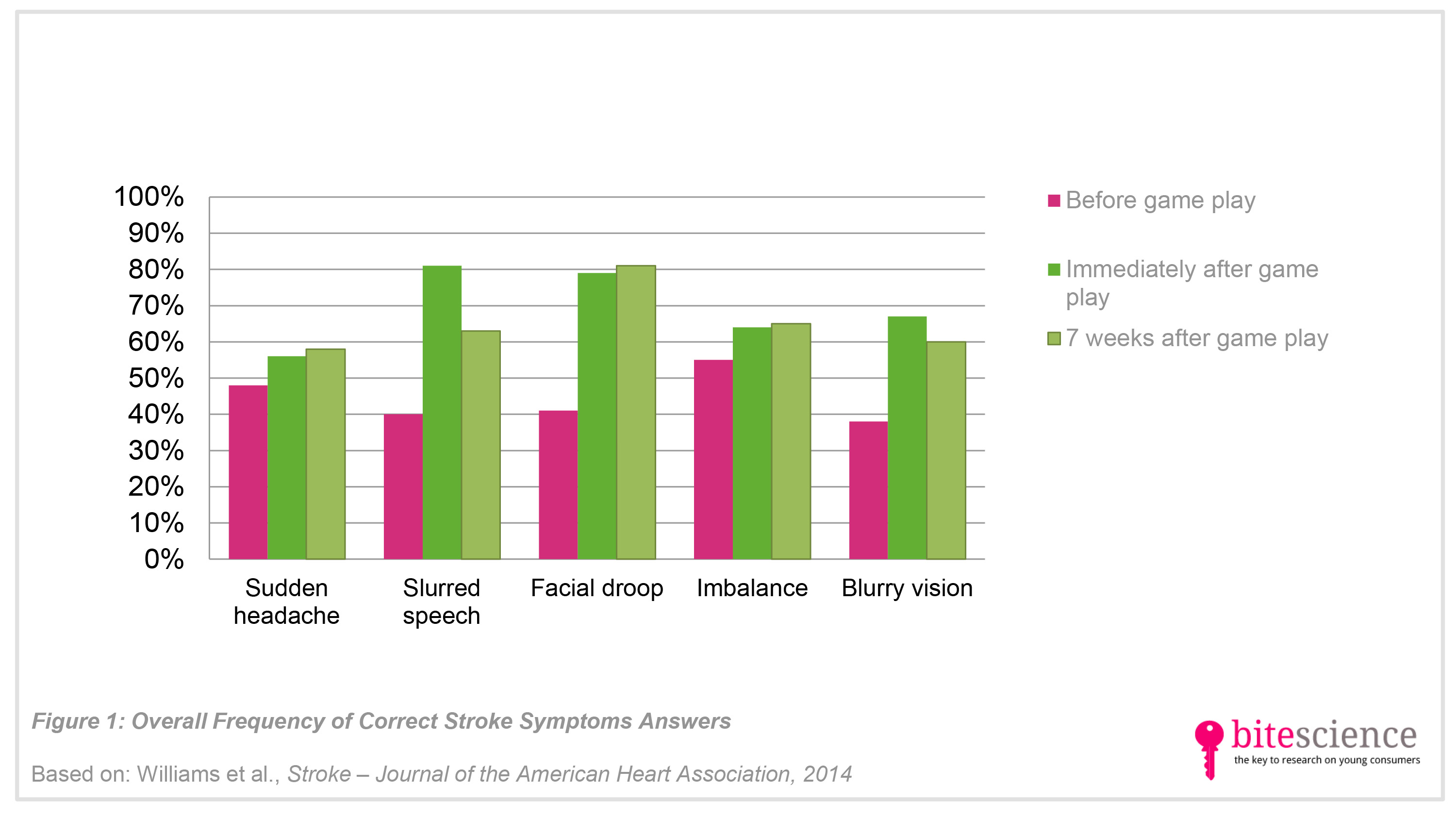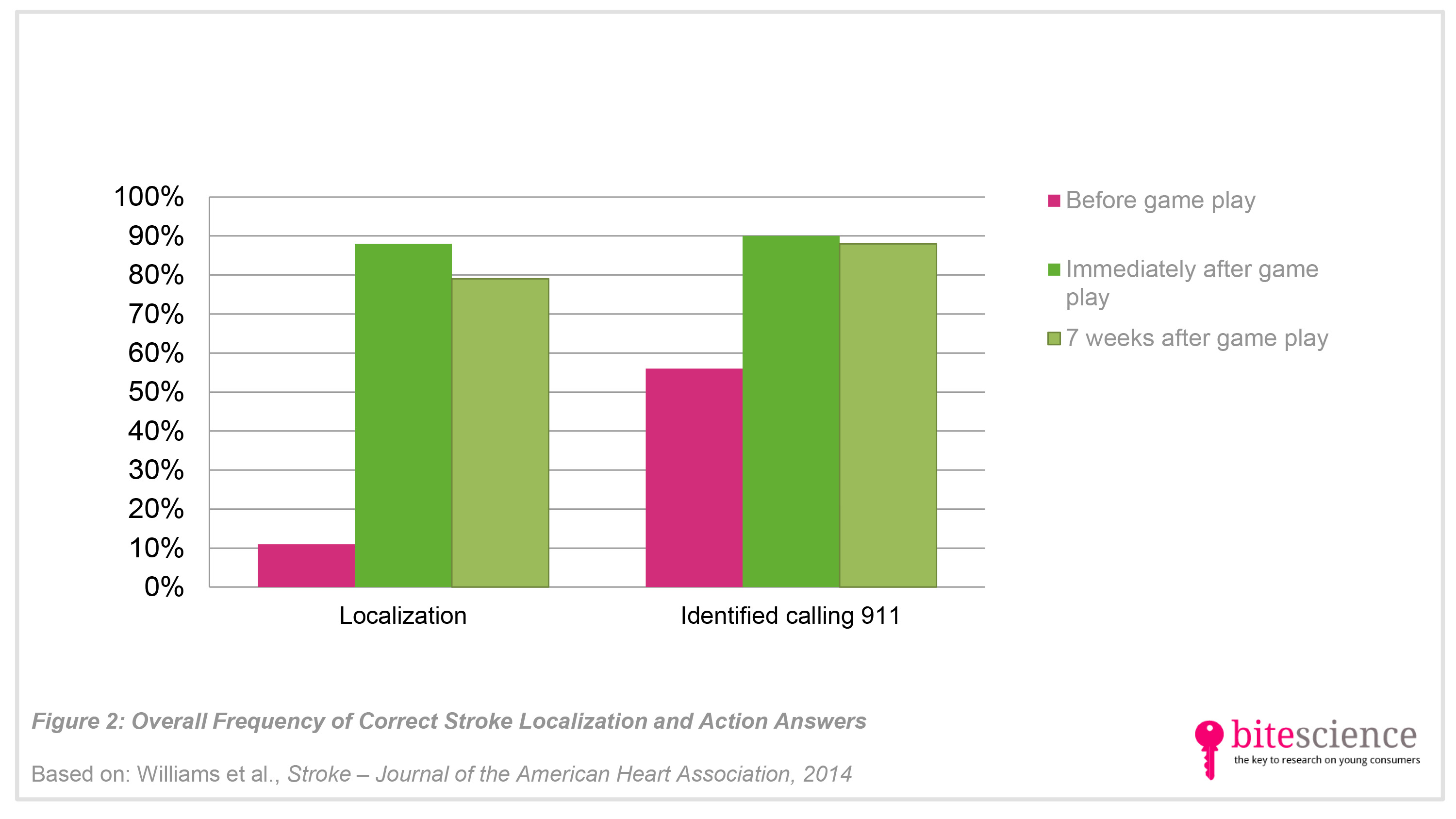
Video Games Can Help Kids Signaling Strokes
Video games in which children learn about strokes can improve children’s signaling of and dealing with strokes, a study in the Journal of the American Heart Association shows. After game play children (9- to 12-year-olds) from low-income families gained more knowledge about the symptoms (e.g., headache, facial droop, and imbalance), localization of strokes, and the importance of calling 911 when someone is showing these symptoms.
Take aways
- Video games, such as Clot Buster, in which children (9- to 12-year-olds) learn about strokes by navigating a spaceship through the artery and answering questions for extra (clotbuster) medicine, can improve children’s stroke knowledge (symptoms, localization, and the importance of calling 911).
- The effects of these games hold for two months, and perhaps even longer.
- For health game developers and practitioners it’s important to be aware of the potential of video games for improving and sustaining stroke knowledge of children.
Study information
The question?
Can video games be successful in improving children’s knowledge about strokes?
Who?
210 9- to 12-year-olds from low-income families (mean age: 10 years; 48% boys).
Where?
United States
How?
Before game play, all children were tested for their stroke knowledge: stroke symptoms (e.g., headache, slurred speech, facial droop, imbalance, blurry vision), and the localization of the stroke (in which organ in the body a stroke occurs). They were also offered different stroke scenarios and four options for action (of which calling 911 was the correct answer). Then, they played the stroke video game Clot Buster for 15 minutes in which they had to navigate a clotbusting spaceship through the artery. When clots occluded the passage of blood to the brain, they were supposed to remove it by shooting at it. Players received extra clotbuster medicine when correct answers were given on different stroke knowledge questions, otherwise the correct answers were given. Children’s stroke knowledge was tested again immediately after game play, and again seven weeks later.
Facts and findings
- The video game improved children’s stroke knowledge both immediately and seven weeks after game play:
- Children recognized the stroke symptoms more often after game play (immediately and after seven weeks) than prior to game play, except for knowledge about headache symptoms gained immediately after game play (see Figure 1).
- Children identified the right stroke location and call for action (i.e., calling 911) more often after game play (immediately and after seven weeks) than prior to game play (see Figure 2).
- Thus, after seven weeks stroke knowledge was still significantly improved compared to their knowledge prior to game play, with even further increases in knowledge of three of the five stroke symptoms (headache, facial droop, and imbalance).
- Almost all children (90%) reported to like the game.
- Critical note: This study did not compare results from players with non-players.

